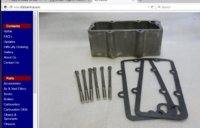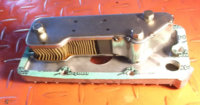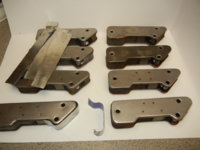Just a trivial update, may be of interest to purists or the curious.
On the advice of others in this forum, I acquired a spare sump cover, sump filter and drain plug, from a salvaged '74.
Then compared these parts to my original '71 parts.
Researching the parts manuals and comparing the pics:
256-13417-00-00 - Sump cover (1970-1984)
The sump cover part number remained unchanged throughout production.
But, you'll see subtle differences here.
Casting marks are different. The oil passage/bridge is larger and machined flat on the later cover.
(Please ignore the probe in the lower right, separate project)
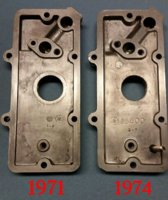
256-15351-00-00 - Drain plug (1970-1984)
The drain plug part number remained unchanged throughout production.
But, if I lay a screwdriver over the magnet of the later plug, the magnet is strong enough to let me lift it off the table. The early drain plug magnets fail this test, the magnets are weaker and release before I can lift the plugs off the table.

256-13411-00-00 - Sump filter (1970-1971)
256-13411-01-00 - Sump filter, with magnets (1972-1984)
The addition of magnets is quite obvious.
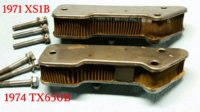
Now, here's where it gets complicated. The (3) sump filter bolts.
The early boltheads were cross-drilled for safety wire. But, never saw safety wire used.
95201-06040-00 - Sump filter bolts (3) (cross-drilled heads) (1970-1972)
After 1972, the sump filter bolts had normal hex heads, but the parts manuals have a nasty mix of part numbers.
97301-06040-00 - Sump filter bolts (3) (1973)
97313-06040-00 - Sump filter bolts (3) (1974)
97301-06045-00 - Sump filter bolts (3) (1975-1980)
97021-06045-00 - Sump filter bolts (3) (prior to 1979)
97313-06045-00 - Sump filter bolts (3) (1979)
These part numbers present 6mm bolts of 40mm and 45mm lengths.
The 45mm bolts dont seat as deeply in my '71 cover, and almost don't seat enough to clamp down on the filter.
Something to watch for, I guess...





